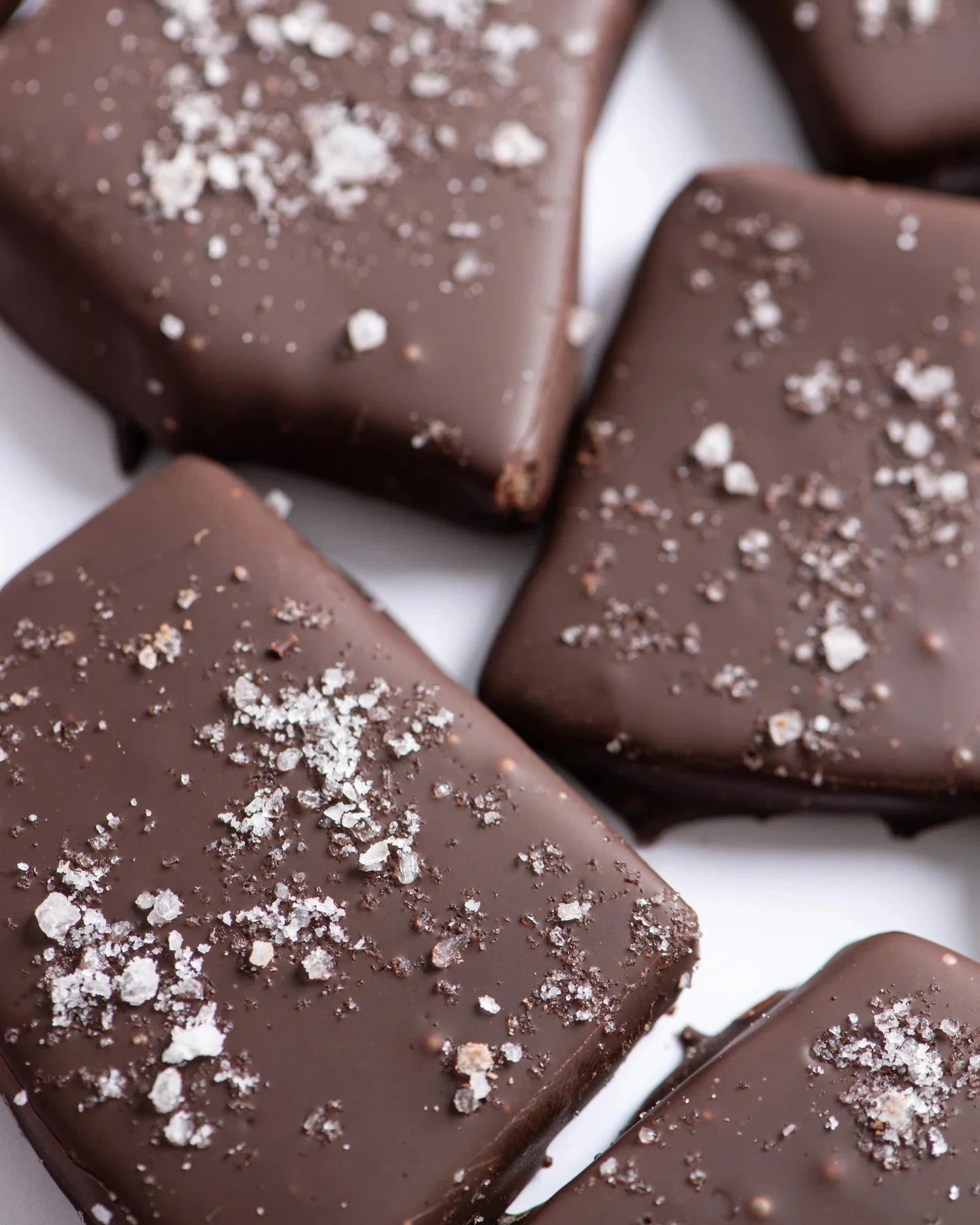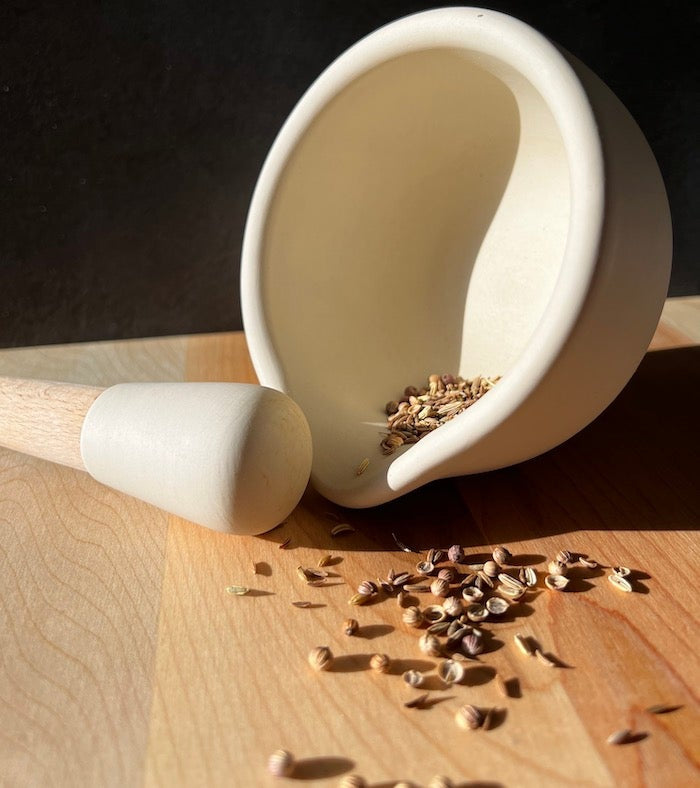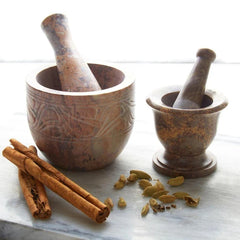Mortar and Pestle: visibly two tools, technically one. The two pieces made of the same material work together by ways of pounding and grinding to create smooth pastes or fine powders. This was one of the first means known for grinding grain + is now incredibly versatile across many industries- pharmaceutical included. To the saying "if it ain't broke, don't fix it," you'll see that the general look of Mortar and Pestles still very closely resembles the original design made back as far as 1550 BC. Since we're food people, I was most curious about how different cultures use Mortar and Pestles in their traditional dishes.
In Mexico, the molcajete is the Mortar while the tejolote is the Pestle. Here, Mortar and Pestles are traditionally made of porous stone, often volcanic rock known as Basalt. Similarly to cast iron pans, this stone/rock will season over time- enriching the outcome further each time its used. Another significant difference between Mexican Molcajetes and other Mortar + Pestles is the three legs commonly found on the bottom of Molcajetes. The best way to season this style is by grinding white rice repeatedly until the rice no longer contains fragments or residue from the Basalt. These volcanic molcajetes are typically used for guacamoles, salsas, and spice grinding. Due to the heat retention of the stone, they are also great vessels for serving hot food at the table.
Next, we travel to Italy. First thing that came to my mind was pesto. In restaurants, pesto has become a quick condiment that comes together in seconds using a blender or food processor. Nothing will compare to a well loved + freshly ground pesto made with patiences and a pestle. The creatively uneven texture + overwhelming (in the best way) aromatics are best preserved in a marble mortar and pestle. Not only does marble retain liquids without absorbing the flavor, but its also naturally chilled which will keep your herbs a more vibrant green. The most common marble used is Carrara. The traditional "four ears" shape of an mortar and pestle is distinctive to Genova for centuries, much like the "three feet" in Mexico.
Now with Indian food, we are always toasting up whole spices before grinding to include in dishes. This awakens the oils in each spice and provides another depth of flavor. The Mortar and Pestle is used as much as a food processor as it is a spice grinder in Indian cooking. Curry paste, chutneys, chai blends-- the possibilities are endless. In India, Mortar and Pestles are traditionally made of marble or soapstone, often with hand carvings adorning the sides.
If you've used Saffron before, you may be familiar with the technique of grinding saffron with a pinch of sugar + "brewing" it with some boiling water in a Mortar and Pestle. Iran is recognized as the source for over 90% of the world's Saffron, and they utilize this technique to ensure they do not waste a fleck of it. In a Persian kitchen, it is likely you'll find a small Mortar and Pestle reserved just for Saffron. These Mortar and Pestles are traditionally made of heavy brass and have fine detail.
No matter what part of the world you're in or how many meals you cook a day, a Mortar and Pestle is a quintessential kitchen tool. (So long as you have an understanding of a "labor of love".) One of these could replace your spice grinder, food processor, blender, coffee grinder, + more all while re-connecting you with your food in the process. We all love a good aioli, now made with eggs to help emulsify and brought together in a blender, right? A "true" aioli is made in a Mortar and Pestle with just oil + garlic, a truly impressive feat. (Thank you to our lovely mall customer for sharing this fact with me!)
At SKORDO, we stand proudly behind our Milton Book Mortar and Pestles for years now, offering 3 sizes in our shops. They are made in England, easy to grip, and don't stain! I encourage you to give this tool a try if you haven't yet. If you are a Mortar and Pestle pro, I'd love for you to share your common uses on Instagram with #SKORDOFlavors!









